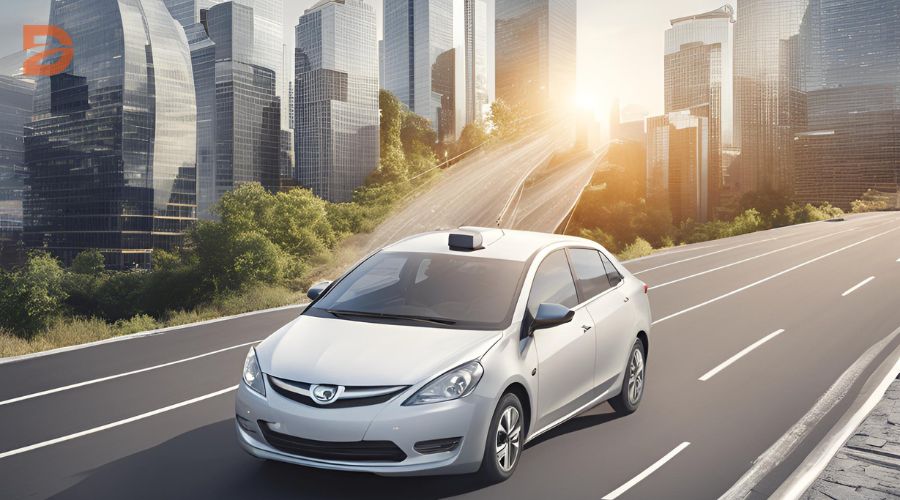Have you ever wondered how your driving habits could affect the price you pay for car insurance? In today’s technological landscape, the answer lies in the widespread adoption of telematics – the integration of telecommunications, vehicle technology, and data analysis. This innovative approach to insurance is transforming the way drivers are evaluated and rewarded for their responsible behavior on the road.
But just how much influence can telematics have on your insurance rates? Prepare to be surprised, as we delve into the world of usage-based insurance and uncover the potential impact on your wallet.
Key Takeaways
- Telematics allows insurance companies to collect and analyze data on driving behaviors, leading to personalized policy pricing.
- Drivers who exhibit safer driving habits can potentially earn significant discounts on their insurance premiums.
- Telematics programs promote responsible driving by providing real-time feedback and incentives to improve driving skills.
- Insurance companies are leveraging telematics data to enhance risk assessment, develop new products, and reduce claims costs.
- Telematics-based insurance policies are becoming increasingly popular, offering tailored coverage options for different driving profiles.
Understanding Telematics and Usage-Based Insurance
Telematics, the integration of telecommunications and informatics, has revolutionized the insurance industry. These advanced systems collect data from Bluetooth beacons, mobile apps, or diagnostic devices installed in vehicles, providing insurers with valuable insights into driving behaviors and mileage. By analyzing how, when, and where users drive, telematics software helps insurers calculate a policyholder’s risk profile, allowing them to offer personalized insurance rates based on real-world driving habits.
What is Telematics?
Telematics technology enables the tracking and monitoring of vehicle usage and driver behavior. This data, ranging from miles driven and location to acceleration and braking patterns, is then used by insurers to assess risk and offer usage-based insurance (UBI) plans. UBI programs, also known as pay-as-you-drive or pay-per-mile insurance, provide discounts to drivers who demonstrate safe and low-mileage driving habits.
How Usage-Based Insurance Works
Usage-based insurance (UBI) programs use telematics data to calculate a driver’s risk profile. Factors like mileage, acceleration, braking, and cornering are all taken into account to determine personalized insurance rates. Drivers who exhibit safer driving behaviors can enroll in these programs to pay less for their coverage, while those at higher risk may face higher premiums. The growth of UBI has been driven by the increasing popularity of connected car technology and the insurance industry’s desire to more accurately assess individual risk.
“The use of telematics in UBI programs has raised concerns over data privacy, as insurers gain access to detailed information about a driver’s habits and movements.”
As telematics technologies continue to evolve, the insurance industry is exploring new opportunities to leverage these innovations. With the global insurance telematics market expected to reach 107 million subscriptions by 2018, the future of personalized, data-driven insurance is rapidly taking shape.
Benefits of Telematics for Drivers
Telematics technology is revolutionizing the auto insurance industry, offering drivers substantial benefits beyond just potential discounts. By monitoring driving behavior through connected car technology, telematics-based insurance plans can provide a more personalized and rewarding experience for policyholders.
Potential Insurance Discounts
One of the primary advantages of telematics is the ability to earn insurance discounts based on safe driving habits. Insurers can now more accurately assess risk and offer tailored premiums to low-risk drivers who demonstrate responsible behavior behind the wheel. Drivers who maintain good driving records can potentially save hundreds of dollars annually on their auto insurance policies.
Promoting Safer Driving Habits
Beyond cost savings, telematics also has a positive impact on driving culture. By providing real-time feedback and monitoring through mobile apps or in-vehicle devices, telematics encourages drivers to be more cautious and attentive on the road. This not only benefits the individual policyholder but also contributes to safer roads for the broader community.
According to an Insurance Research Council survey, 45% of U.S. drivers reported improving their driving behavior after enrolling in a telematics program offered by their insurer, as their insurance cost went down when they were driving more carefully.
Telematics-based insurance plans can offer substantial savings for low-risk drivers, as insurers can more accurately assess risk and offer personalized discounts. Additionally, the incorporation of telematics into insurance apps has a positive impact on driving culture, encouraging safer habits and reducing the number of reckless drivers on the road.
Telematics, usage-based insurance
How Telematics Data is Collected
Telematics technology is transforming the insurance industry, enabling insurers to gather detailed data on driving behaviors. This data is collected through various means, including smartphone apps, devices that plug into a vehicle’s computer diagnostic port, or electronic tags mounted inside the car. These systems track driving patterns such as speed, braking, cell phone use (to observe potential distracted driving), and time of day.
The specific types of data collected and how it is used vary by insurance provider, but the goal is to gain insights into driving habits and risk factors to personalize insurance rates. Drivers who exhibit safe behaviors like low mileage, daytime driving, and gentle acceleration and braking may qualify for discounts through usage-based or pay-as-you-drive insurance policies.
Recent studies have shown a concerning trend of increased distracted driving in the United States. Distracted driving incidents rose by over 30% from February 2020 to February 2022, with the average driver using their phone for nearly 2 minutes per hour of driving. Insurers are leveraging telematics data to identify and incentivize safer driving practices, which can ultimately lead to lower accident rates and more affordable premiums for responsible drivers.
As the adoption of telematics and connected car technology continues to grow, insurers and policymakers must balance the benefits of personalized insurance pricing with consumer privacy concerns. Transparency around data collection and usage, as well as strong data security measures, will be critical to building trust and ensuring the long-term success of usage-based insurance programs.
Concerns and Limitations of Telematics
While telematics technology offers numerous benefits to drivers and insurance providers, it also raises significant concerns regarding privacy and data security. The sensitive nature of driver behavior data, including location, speed, and active times, poses serious risks if compromised or misused. Several countries and states have enacted laws restricting the use of telematics devices without the explicit consent of the driver.
Privacy and Data Security Issues
Policyholders may have concerns that their driving data could be misused or accessed by unauthorized parties, leading to potential discrimination or unfair treatment. Insurance companies offering telematics-based policies must address these privacy concerns by being transparent about data usage, implementing robust security practices, and adhering to evolving privacy regulations.
Additionally, there are concerns about the accuracy of telematics data and the potential for drivers to be unfairly labeled as “bad drivers” based on factors beyond their control, such as traffic conditions or weather-related incidents. The high costs associated with enrolling in these programs can also be a barrier for some drivers.
“Insurers offering telematics-based policies must address privacy concerns by being transparent, implementing security practices, and adhering to privacy laws.”
Despite these concerns, the benefits of telematics, such as the potential for insurance discounts and the promotion of safer driving habits, continue to drive the adoption of this technology. As the industry evolves, addressing these privacy and security issues will be crucial for the successful integration of telematics in the automotive and insurance sectors.
Conclusion
As the telematics and usage-based insurance markets continue to evolve, the integration of these technologies with other automotive systems, such as advanced driver-assistance features, will enable insurance providers to develop innovative products and services that cater to their customers’ diverse needs. However, the sensitive nature of the data collected by vehicle tracking and driver behavior monitoring systems necessitates robust privacy and data security measures to protect policyholders’ personal information.
The future of pay-as-you-drive and connected car technology in the insurance industry holds great promise, as IoT in insurance and automotive data analytics can help insurers offer more personalized, risk-based mileage-based premiums and enhanced fleet management solutions. To fully realize the benefits of telematics, insurance providers, software developers, device manufacturers, and government entities must work collaboratively to strike the right balance between technological advancement and safeguarding customer privacy.
By embracing the power of telematics and usage-based insurance, the insurance industry can forge stronger relationships with policyholders, promote safer driving habits, and ultimately contribute to a more secure and efficient transportation ecosystem.
FAQ
What is telematics and how does it work?
Telematics is the integration of telecommunications, vehicle technology, computer science, and electrical engineering. Telematics systems help insurance companies collect data from policyholders’ vehicles and gain valuable insights into drivers’ behavior. The software analyzes how, when, and where users drive, helping insurers calculate a user’s risk profile.
How does usage-based insurance work?
Usage-based insurance assesses driver risk levels based on driving habits, while pay-per-mile insurance tracks drivers’ mileage, allowing those who drive less to save money. Telematics-based insurance plans can provide substantial savings for low-risk drivers, as insurers can more accurately assess risk and offer personalized discounts.
What are the benefits of telematics for drivers?
According to an Insurance Research Council survey, 45% of U.S. drivers reported improving their driving behavior after enrolling in a telematics program offered by their insurer, as their insurance cost went down when they were driving more carefully. The incorporation of telematics into insurance apps also has a positive impact on driving culture, encouraging safer habits and reducing the number of reckless drivers on the road.
How is telematics data collected?
Telematics data is collected through various means, including smartphone apps, devices that plug into a vehicle’s computer diagnostic port, or electronic tags mounted inside the car. These systems track driving behaviors such as speed, braking, cell phone use (to observe potential distracted driving), and time of day.
What are the concerns about telematics?
While telematics offers substantial benefits, there are also significant privacy and data security concerns. The sensitive nature of the drivers’ behavior data poses severe risks if leaked. Several countries and states have enacted laws or regulations restricting the use of telematic devices without the explicit consent of the driver. Additionally, there are concerns about the accuracy of telematics data, the high costs associated with enrolling in these programs, and the potential for drivers to be unfairly labeled as “bad drivers” based on factors beyond their control.











